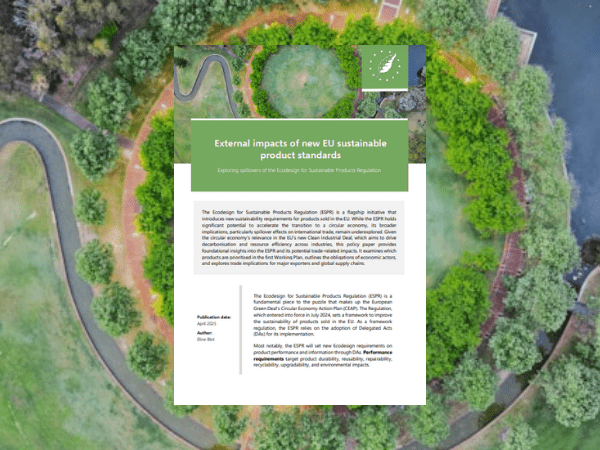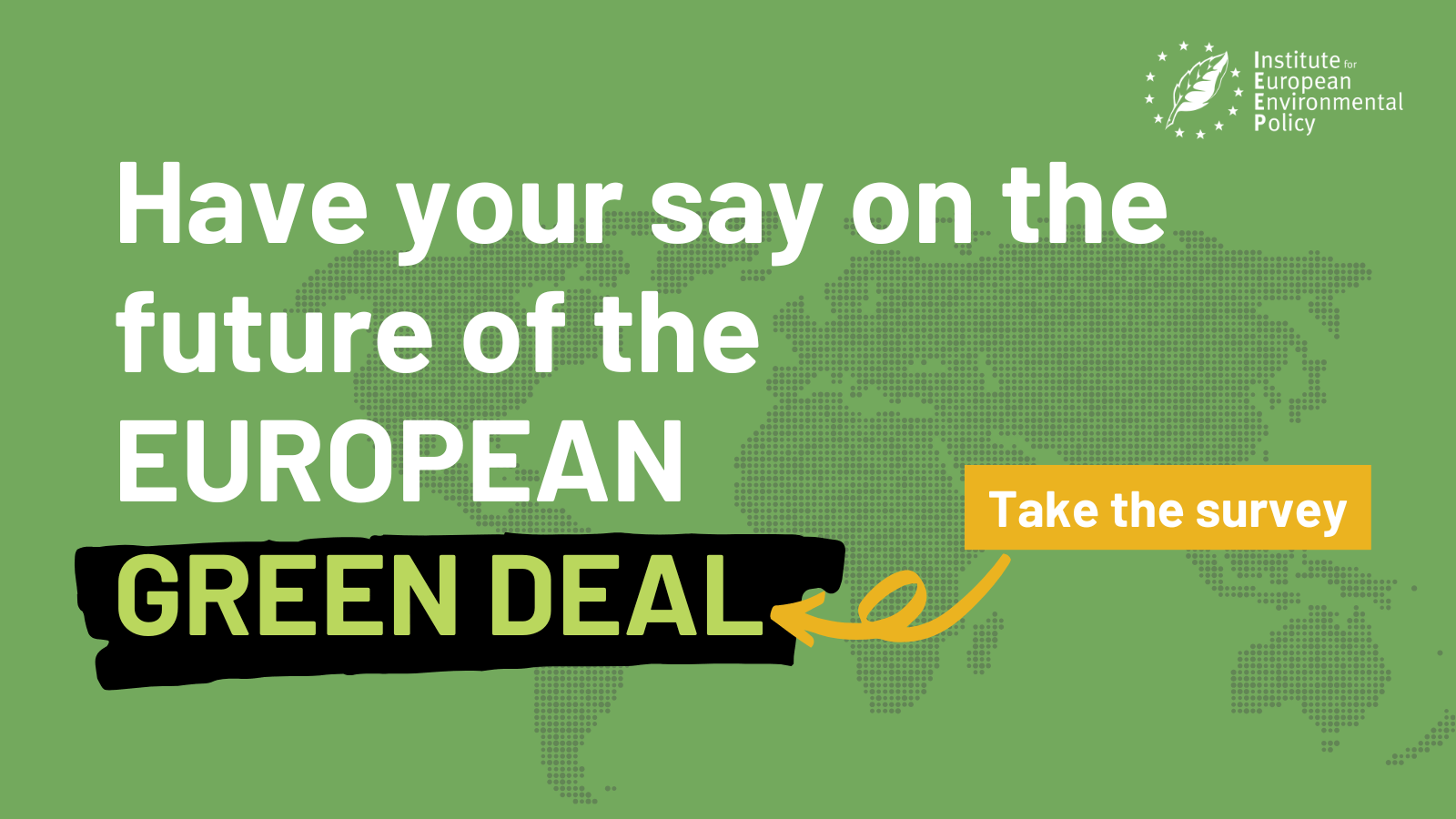AUTHOR: Eline Blot
This policy paper reviews the Ecodesign for Sustainable Products Regulation (ESPR) with a primary focus on new performance and information requirements for products sold in the EU. This paper explains which products will be covered in the first Working Plan, what obligations economic actors will face, and features potential trade implications for major exporters and supply chains.
The Ecodesign for Sustainable Products Regulation (ESPR) is a fundamental piece to the puzzle that is the European Green Deal’s Circular Economy Action Plan (CEAP). The Regulation, which entered into force in July 2024, sets a framework to bolster the sustainability of products sold in the EU. This would be achieved primarily through the introduction of new Ecodesign requirements targeting product performance and information. Performance requirements target product durability, reusability, repairability, recyclability, upgradability, and environmental impacts. Information requirements, to be carried on the Digital Product Passport (DPP), ease access to product information such as performance, traceability, technical documentation, harmful chemicals, and user manuals to facilitate product repair and recycling.
The first ESPR Working Plan sets out the first batch of product groups to be covered by the ESPR and is planned for adoption by 19 April 2025. The drafting is currently underway by the European Commission in cooperation with the Ecodesign Forum and Member States Expert Group. The Ecodesign Forum, which held its first meeting on 19-20 February 2025, will contribute to the preparation of Ecodesign requirements and working plans, evaluating market surveillance effectiveness, assessing self-regulation measures, and reviewing potential bans on the destruction of unsold consumer products. As a member of the Ecodesign Forum, IEEP recently published our initial impressions of the Forum.
Product groups to be covered in the first Working Plan include clothing, furniture, tyres, steel, and aluminium, along with horizontal repair, recycling and recycled content requirements for ICT products. From a trade perspective, the EU’s largest export partners in these product groups are China, Turkey, India and Bangladesh, among others. With both foreign and domestic economic actors required to adhere to new obligations under the Regulation, the potential spillovers of the ESPR would manifest primarily through increased cost of compliance, technical and regulatory barriers, market access restrictions and regulatory divergence. These largely unintended consequences risk disproportionately affect countries with lower institutional capacities and underline the importance of regulatory cooperation.
Without efforts to align standards and provide technical assistance, the ESPR may contribute to market fragmentation and a two-tier global system for sustainable products. However, by actively engaging in multilateral fora like TESSD and GACERE, cooperating on standardisation with the ISO, and by supporting capacity-building programmes such as SWITCH Africa and the EU Circular Economy Resource Centre, the EU can shape a more inclusive global transition.
The roll-out of a new industrial strategy anchored in circularity alongside the ESPR will be key to shifting the EU towards a circular economy and addressing its high levels of resource use. This emphasises the need for the EU to ambitiously incorporate Ecodesign requirements that will meaningfully extend product lifespans and reduce resource use while cooperating with third countries to kick off a global circular transition.
Briefing cover photo by Ian on Unsplash



